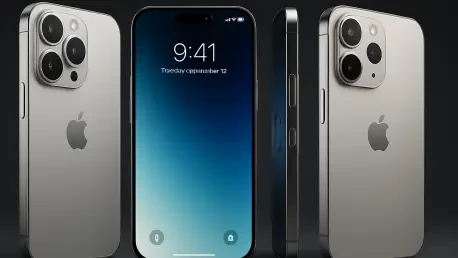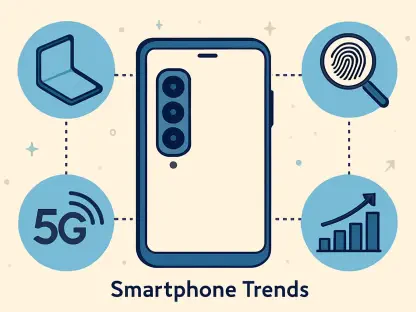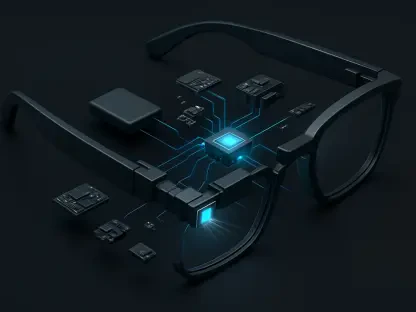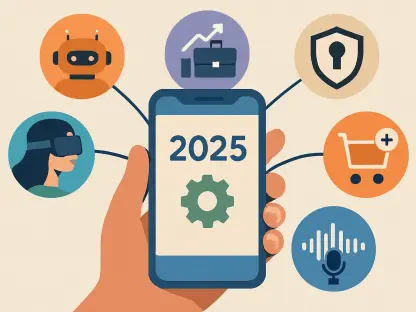I’m thrilled to sit down with Nia Christair, a renowned expert in mobile technology, whose extensive background in mobile gaming, app development, device design, and enterprise solutions makes her the perfect person to unpack the exciting rumors surrounding Apple’s upcoming hardware event. With years of experience analyzing trends and innovations in the mobile space, Nia offers a unique perspective on what we can expect from the iPhone 17 lineup, Apple Watch updates, and the next generation of AirPods. In our conversation, we dive into the anticipated design changes, potential new features, and the broader implications of Apple’s rumored innovations, including the introduction of an ultra-thin iPhone Air and health-focused upgrades for wearables. Let’s explore what these developments could mean for users and the industry at large.
How do you see the rumored design updates for the iPhone 17, like the larger 6.3-inch screen and the 120Hz display, shaping the user experience compared to previous models?
I think these changes are a big step forward for the standard iPhone 17. The bump to a 6.3-inch screen, even if it’s just a slight increase, offers a bit more real estate for immersive content like videos and games, which is always a plus. But the real game-changer is the 120Hz display upgrade from 60Hz. This means smoother scrolling, more responsive interactions, and an overall snappier feel—something Pro models have had for a while. For everyday users upgrading from older iPhones, this could make the device feel premium without stepping into Pro territory. It’s a smart move by Apple to blur the lines between standard and Pro models, making the base iPhone more appealing.
What’s your take on the potential new colors like purple and green for the iPhone 17, and how do you think they’ll resonate with consumers?
I’m excited about these rumored colors! Purple and green, if done right, can bring a fresh, playful vibe to the iPhone lineup. Apple has a history of using color to appeal to younger demographics or those looking to express individuality, and these shades could tap into current trends in fashion and design. Purple, especially, has been gaining traction as a bold yet sophisticated choice, while green often evokes a natural, calming feel. I think they’ll resonate well, particularly with users who see their phone as a style statement. It’s a subtle way for Apple to keep the lineup visually exciting without overhauling the design.
With rumors of a 24-megapixel front camera on the iPhone 17, how significant do you think this upgrade could be for selfie enthusiasts and video callers?
This is a substantial leap if the rumors hold true. Jumping to a 24-megapixel front camera would mean sharper, more detailed selfies and noticeably better quality during video calls. For selfie enthusiasts, especially those who rely on their iPhone for social media content, this could be a game-changer—more detail means better edits and filters. For video calls, whether it’s FaceTime or Zoom for work, the clarity could make interactions feel more personal and professional. It’s also a signal that Apple is prioritizing front-facing camera tech, which has often lagged behind rear cameras in terms of upgrades. I’d say this could set a new standard for what we expect from smartphone selfies.
Turning to the iPhone 17 Pro, there’s talk of switching from a titanium band to aluminum. What advantages might this bring to both Apple and users?
Switching to aluminum from titanium could be a strategic move for Apple. Titanium is premium and durable, but it’s expensive to produce, so aluminum could help lower manufacturing costs without sacrificing too much on quality. For users, aluminum typically means a lighter device, which is always welcome—especially for those who find Pro models a bit hefty. It might not have the same high-end feel as titanium, but if Apple polishes the design, most people won’t notice a downgrade. Plus, aluminum is still tough and could improve repairability if it’s easier to work with. I think it’s a practical trade-off that could make the Pro more accessible price-wise.
The iPhone Air is rumored to be the thinnest iPhone ever at 5.5 mm. How do you think this focus on a slim design reflects Apple’s strategy in the competitive smartphone market?
The rumored iPhone Air being just 5.5 mm thick is Apple’s way of making a bold statement in a market where slimness is becoming a key differentiator. Competitors like Samsung and Huawei have been pushing ultra-thin designs, and Apple seems to be responding with the Air as a direct challenge. It’s not just about aesthetics—thinness signals cutting-edge engineering and can appeal to users who prioritize portability and style. However, it’s a risky move since it might mean compromises, like a single rear camera or limited speaker space as rumored. I see this as Apple testing the waters for future innovations, possibly even paving the way for foldables. It’s about staying ahead in the ‘wow factor’ race while addressing a niche but growing demand for sleek devices.
Looking at the Apple Watch updates, especially the potential for blood pressure monitoring in the Series 11 and Ultra 3, how transformative do you think this could be for wearable health tech?
If Apple pulls off blood pressure monitoring in the Series 11 and Ultra 3, it could be a landmark moment for wearable health tech. This isn’t just a gimmick—it’s a feature that could empower users to track a critical health metric in real time, potentially catching issues early. For people with hypertension or at risk of heart conditions, getting alerts about abnormal readings could be life-changing. It builds on Apple’s existing health focus, like ECG and heart rate monitoring, and positions the Watch as more of a medical tool than just a fitness tracker. That said, accuracy will be key, and if there are delays as rumored, it’s better they get it right. This could push competitors to step up their game in health tech, too.
Finally, what’s your forecast for how Apple’s rumored hardware innovations, from the iPhone Air to health-focused Apple Watch features, will shape the tech landscape in the coming years?
I believe Apple’s rumored innovations could set the tone for the industry over the next few years. The iPhone Air, with its ultra-thin design, might redefine expectations for smartphone form factors, pushing other manufacturers to prioritize sleekness without sacrificing functionality. If successful, it could accelerate the trend toward foldables and hybrid designs by 2026 as rumored. On the health front, features like blood pressure monitoring in the Apple Watch could make wearables indispensable for personal health management, driving competitors to integrate similar capabilities or risk falling behind. Overall, Apple seems to be balancing bold design risks with practical, user-focused upgrades, which could solidify their influence in both premium hardware and health tech. I expect we’ll see a ripple effect across the market as others scramble to match or innovate beyond these benchmarks.









